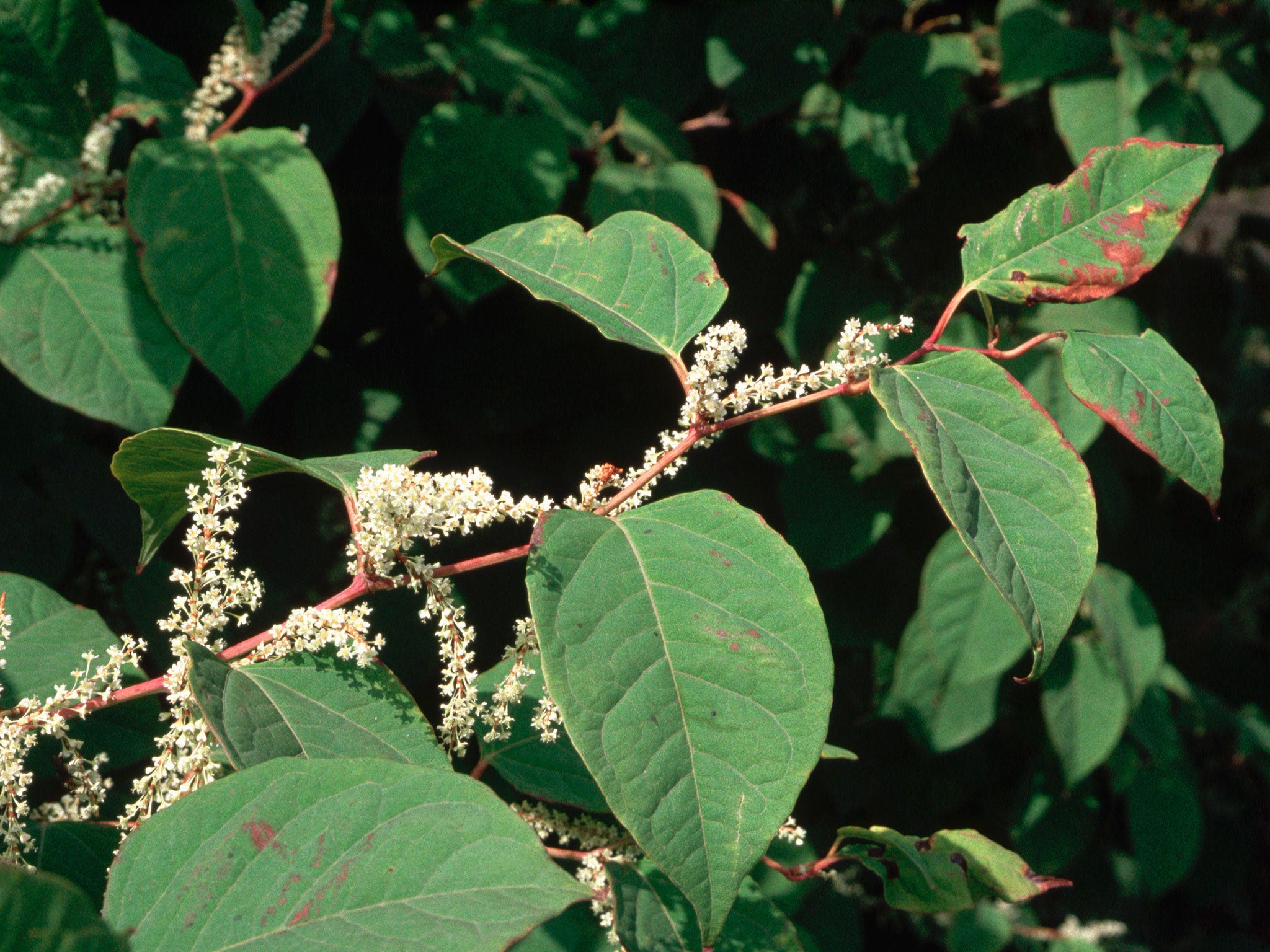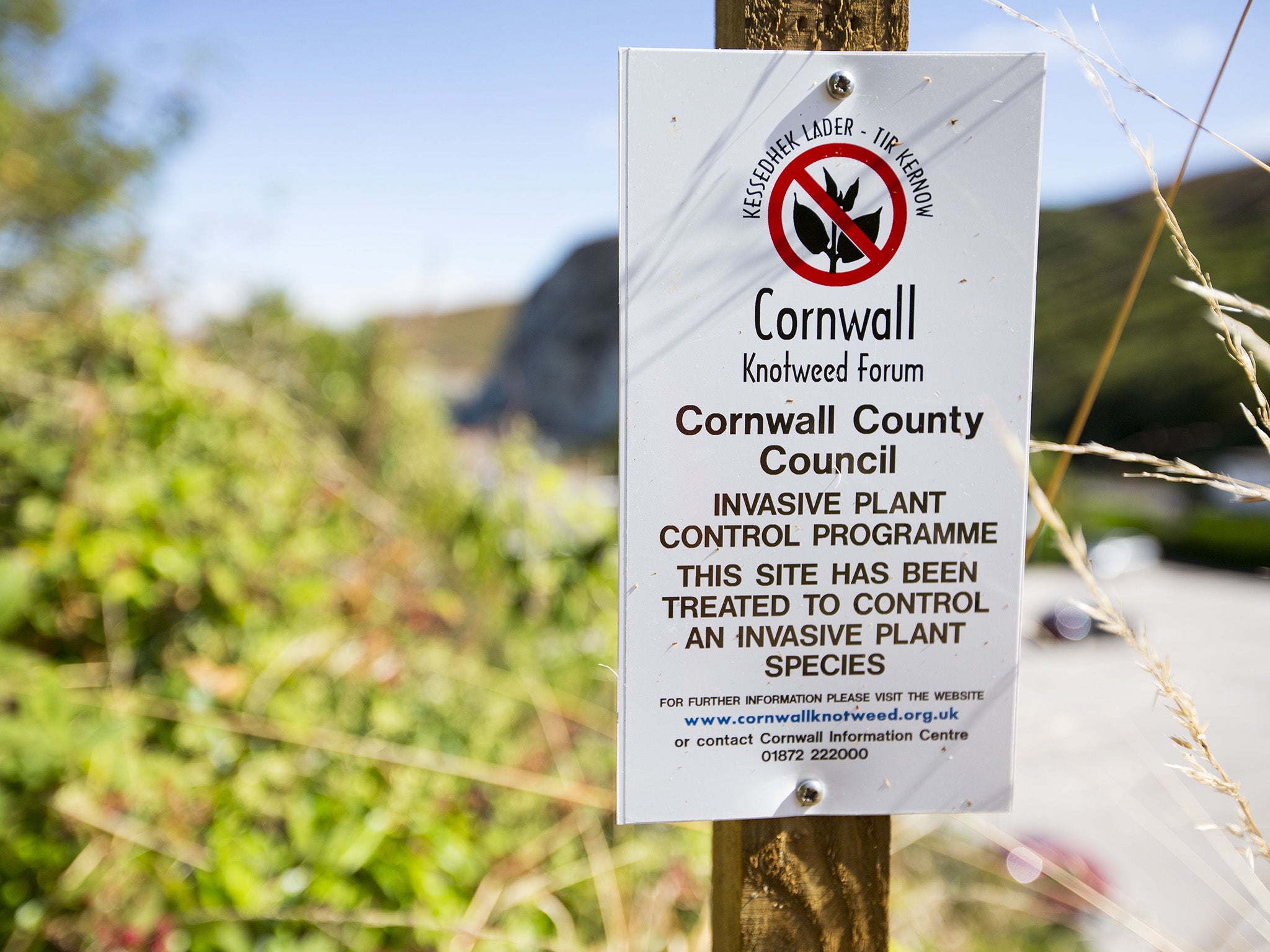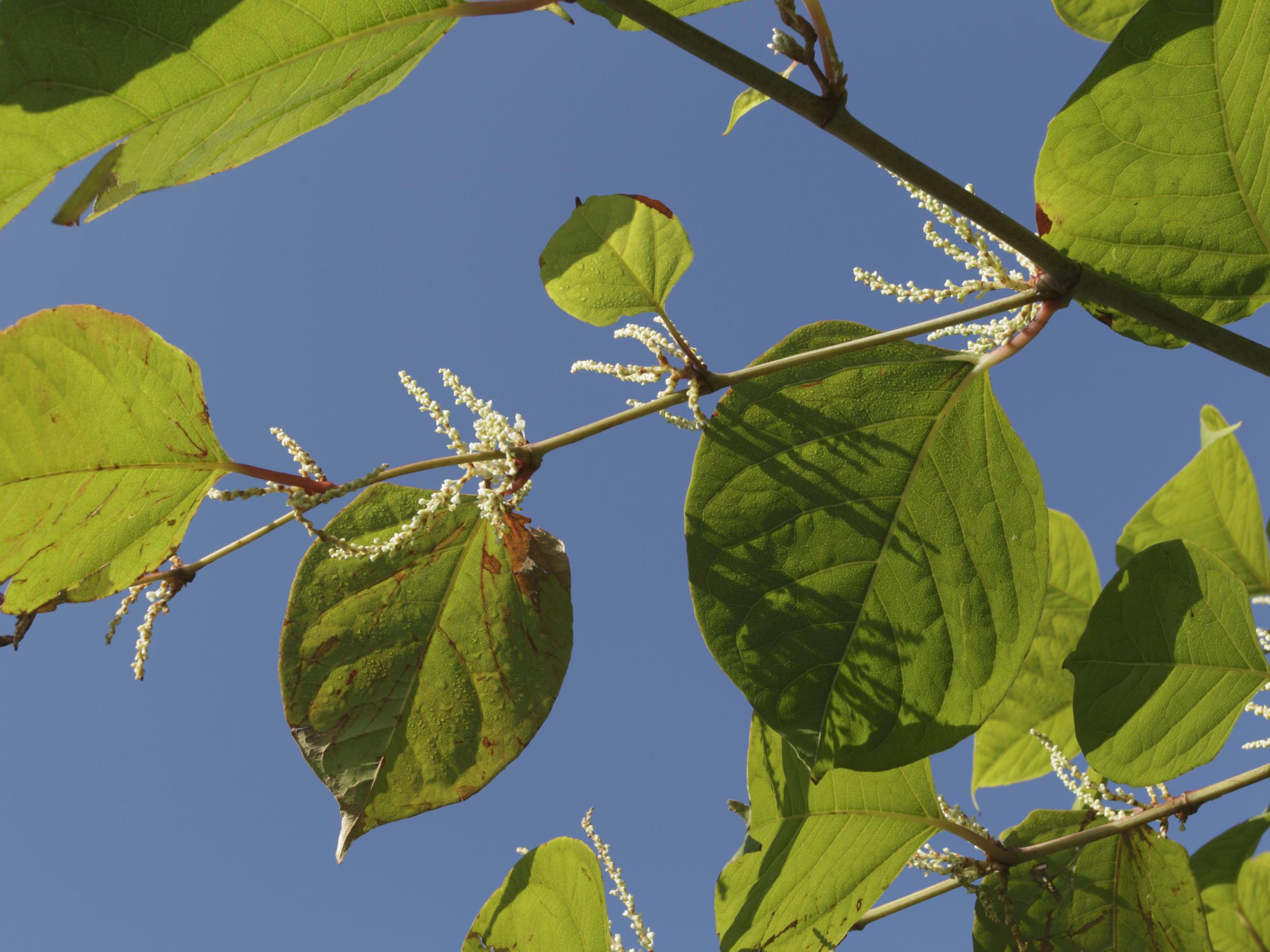Troublesome triffids: How to get rid of Japanese knotweed
It can cost £10,000 to eradicate Japanese knotweed from your garden. But there are cheaper methods, says Alex Mitchell

Your support helps us to tell the story
From reproductive rights to climate change to Big Tech, The Independent is on the ground when the story is developing. Whether it's investigating the financials of Elon Musk's pro-Trump PAC or producing our latest documentary, 'The A Word', which shines a light on the American women fighting for reproductive rights, we know how important it is to parse out the facts from the messaging.
At such a critical moment in US history, we need reporters on the ground. Your donation allows us to keep sending journalists to speak to both sides of the story.
The Independent is trusted by Americans across the entire political spectrum. And unlike many other quality news outlets, we choose not to lock Americans out of our reporting and analysis with paywalls. We believe quality journalism should be available to everyone, paid for by those who can afford it.
Your support makes all the difference.A new heat map has identified the UK’s Japanese knotweed hotspots, with most occurrences of the notorious weed being spotted in London, northwest England, Wales and the Midlands.
The map, compiled by invasive plant specialists Environet, records 621 outbreaks of the destructive weed in the last year.
Infamously hard to get rid of, the presence of knotweed can reduce the asking price of a house, with one homeowner even being awarded costs and damages after a chartered surveyor failed to spot the weed growing in their garden.
In 2019, the owner sued not only for the cost of the removal of the invasive plant from their property but also of “making good” the garden and distress and inconvenience suffered.
The judge also took into account the reduction of value of the property. The owner commissioned a full structural survey when purchasing a ground-floor flat in 2014. The survey made no mention of knotweed so the owner went ahead with the purchase.
But the following year, their gardener found signs of the plant. Environet, a company specialising in knotweed removal, confirmed the plant was in three sites in the garden and had been there for at least three years. The owner paid the company to remove it, at a cost of more than £10,000.

Japanese knotweed has long been feared by property owners, and London is a hotspot. Just about now, new shoots of the bamboo-like plant are emerging and will quickly reach a height of two metres, while the strong roots can rampage under fences, damage paths and patios and work their way inside the cavity walls of houses, even emerging two storeys up out of the chimney stack. Removing knotweed from the London Olympics site cost £70m.
If you allow knotweed to escape from your garden into a neighbour’s you could be prosecuted, or given an Asbo for causing a nuisance. It gets even more problematic if you are moving house.
If you have knotweed growing in your garden you must declare it if you sell and this is likely to reduce the value of your property. Mortgage lenders will want an insurance-backed guarantee that the knotweed has been eradicated before agreeing funds to a potential buyer.
Nic Seal from Environet says: “Even when treated there’s still a risk valuers will say there is a residual diminution of the property of two to five per cent.” The costs for knotweed removal in an average London garden, he says, are around £2,500 plus VAT to treat with herbicide and £5,000 to £10,000 to dig it out.
So what should you do if you find knotweed in your garden? If you have a major infestation or you plan to sell your home in the next five years, contact a specialist. Most mortgage companies want a firm associated with the trade body the Property Care Association, so check its website to find a member near you.

However, if you have only a small clump and don’t plan on moving any time soon, you could aim to get rid of it yourself, says RHS chief horticultural adviser Guy Barter. “It’s evil stuff. It’s a lot of work and not feasible if there’s a vast infestation, but you can dig it out with a spade.
“Because it’s classified as ‘controlled waste’, you can’t let any plant material leave the garden. So stack it up to dry on plastic or concrete and then burn it. Or put it in rubble bags and leave it to die for a few years to be sure.”
Barter suggests combining digging up the plant with a herbicide such as Roundup. “But if you’re organic, just dig it up.”
If knotweed is coming in from a neighbouring garden, he says to dig a deep trench on the boundary and line it with a strong root barrier. Try ecomerchant.co.uk for root block impermeable membrane, from £6.25 per linear metre. Knotweed is the most notorious but by no means the only plant likely to have Londoners tearing their hair out. Bamboo makes a great urban privacy screen, rapidly growing to 6ft.
But the roots of “running” varieties can travel 20ft, easily ducking under a fence or wall and popping up next door in the form of thick, spiky shoots. If you plant bamboo, make sure you choose one described as “clump-forming” so it doesn’t get out of control.
If your neighbour’s bamboo is coming into your garden, talk to them about it first, suggests Barter. If they won’t remove it, you could offer to pay for a contractor to do it.
And if this doesn’t work, dig a trench at least 20in deep and line it with a strong root barrier. In this case, a nice clump of bamboo leaves between you and them might be a welcome thing.
To discover what knotweed looks like and for further good guidance for homeowners, visit: rhs.org.uk/advice
Join our commenting forum
Join thought-provoking conversations, follow other Independent readers and see their replies
Comments